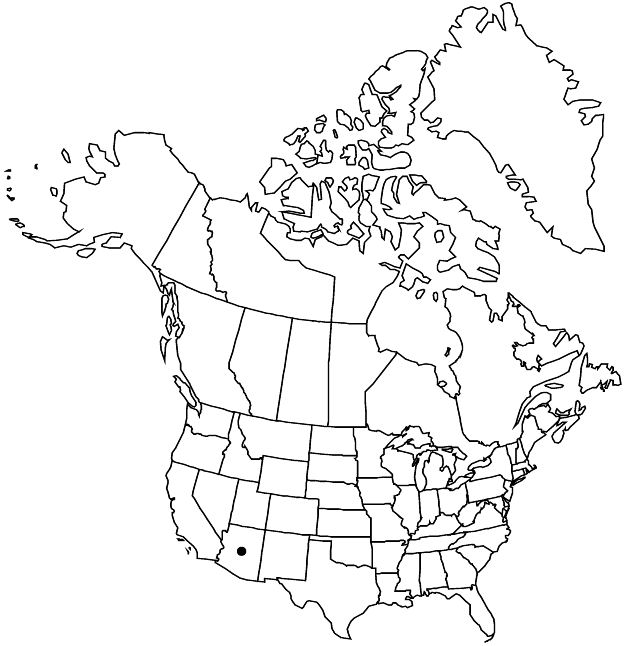Potentilla rhyolitica
J. Bot. Res. Inst. Texas 1: 50, fig. 1. 2007.
Short hairs not well differentiated from long hairs, absent or sparse throughout. Stems 0.2–2 dm. Basal leaves ternate, rarely palmate, 2–8(–11) cm; petiole 1–6(–8) cm, long hairs abundant to dense, spreading to loosely appressed, 1–2(–3) mm, weak to ± stiff, glands ± abundant; leaflets 3(–5), central obovate to broadly elliptic, 1–3 × 0.8–1.8 cm, often distinctly petiolulate, distal 1/2–2/3 of margins evenly incised ± 1/3 to midvein, teeth 2–3(–4) per side, surfaces green to gray-green, long hairs common to dense, 1 mm, glands abundant. Inflorescences 1–10-flowered. Pedicels 0.5–1(–2) cm. Flowers: epicalyx bractlets lanceolate-elliptic, 2–4 × 1 mm; hypanthium 3–5 mm diam.; sepals 3–5 mm, apex acute; petals ± paler abaxially, bright yellow adaxially, ± obcordate, 3–7 × 2–5 mm; filaments 1.5–3 mm, anthers 0.6–1 mm; carpels 5–15, styles 2–3 mm. Achenes 1.5–2 mm, smooth to lightly rugose.
Distribution

Ariz.
Discussion
Varieties 2 (2 in the flora).
Selected References
None.
Key
| 1 | Leaves gray-green, hairs usually dense, sometimes common; styles 2–2.5 mm; achenes 1.5 mm, smooth to lightly rugose; Santa Rita and Huachuca ranges. | Potentilla rhyolitica var. rhyolitica |
| 1 | Leaves green, hairs common, rarely dense; styles (2–)2.5–3 mm; achenes 2 mm, smooth; Chiricahua Range. | Potentilla rhyolitica var. chiricahuensis |